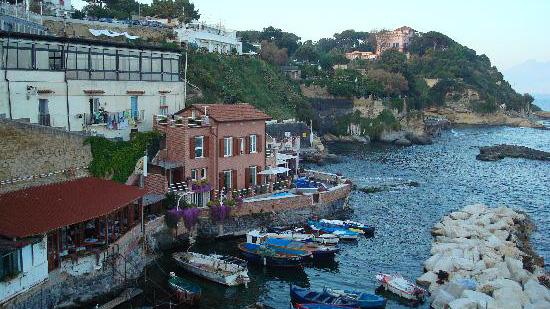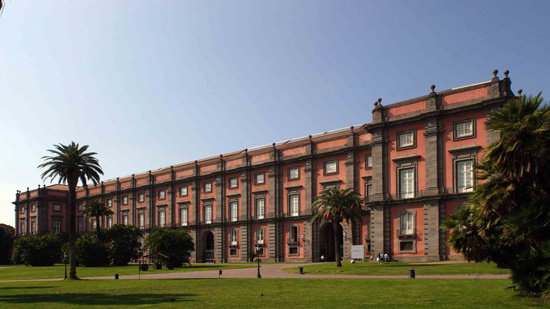Naples is an enormous, sprawling city, and although some of the population lives in the historic center – where most visitors spend their time – most live in neighborhoods surrounding the city center. One of the prettiest and wealthiest neighborhoods in Naples is Posillipo, located on the northern side of the Gulf of Naples atop a hill that overlooks the water.
From the port in Naples you’ll wind your way north through the city center and then along the coast to Posillipo Hill, where you’ll see some of the city’s most beautiful houses.
In some cases, these villas have been broken up more recently into apartments – but many of them are still private homes for elite Neapolitan families.
Without a car, you can take the funicular from the Mergellina neighborhood below up to the top of Posillipo Hill.
Because the neighborhood on Posillipo Hill is primarily residential, there aren’t many attractions on the hill that you’ll have on your itinerary. It’s an excellent spot for a picturesque stroll, particularly when the weather is clear and you can see across the Gulf of Naples to Mt. Vesuvius looming to the south. There are good restaurants in Posillipo, too, which are less apt to cater to tourists – something you might be craving if you’re an adventurous foodie.
Posillipo Hill does have a couple of sights worth checking out.
The ruin of an ancient Roman villa is at the bottom of the hill on the water, including the remains of an amphitheater built into the hill. Access to the ruin is via the Grotta di Seiano, a cave underneath the hill.
Shopaholics will also appreciate the outdoor Posillipo Market, in which you’ll find everything from housewares to designer duds (it’s only open on Thursdays).
The ancient Roman poet Virgil wished to be buried in Naples, and the spot that is said to have been his tomb is at the base of Posillipo Hill (never mind that no remains are there – it’s still a pilgrimage location). There are also two parks dedicated to Virgil in Posillipo – one at the top of the hill, and one at the bottom. Both can be a welcome respite from the bustle that is Naples.


